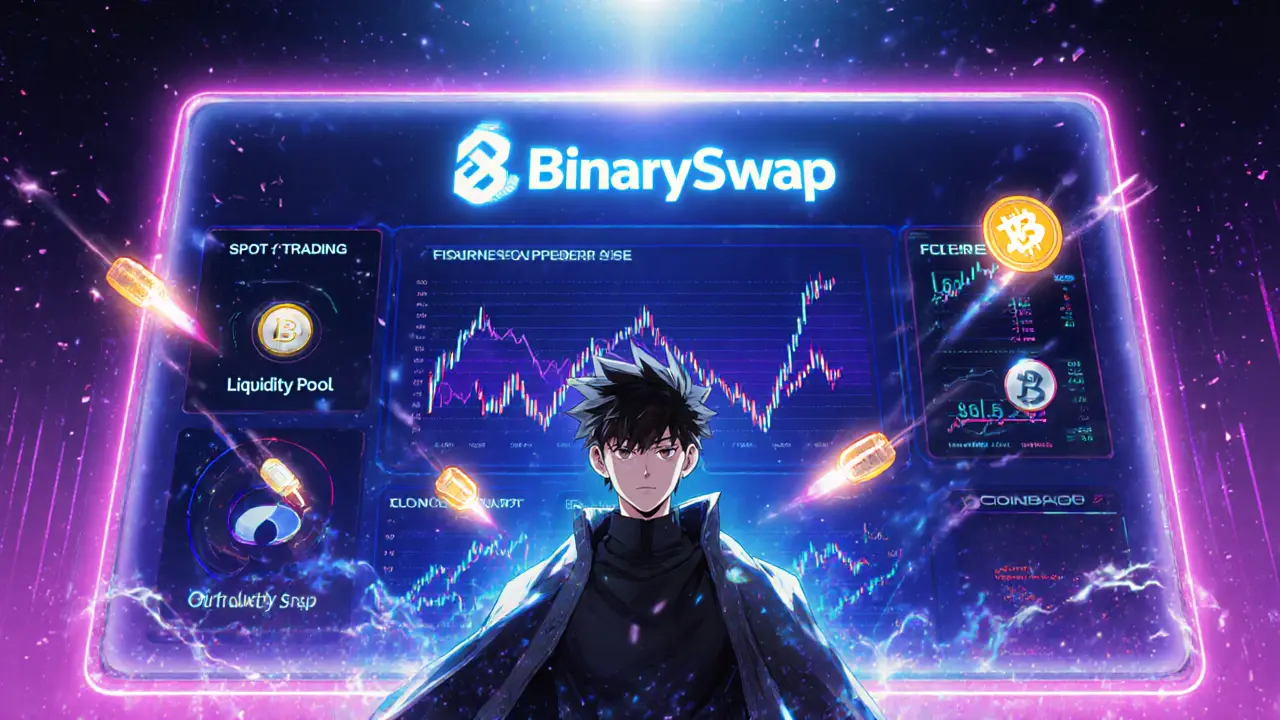

When talking about BinarySwap liquidity, the pool of assets that fuels trade on the BinarySwap platform. Also known as BinarySwap pool, it lets users swap tokens without a traditional order book. In simple terms, the more liquidity there is, the easier and cheaper each trade becomes.
Decentralized exchange, a platform that lets users trade directly from their wallets is the umbrella under which BinarySwap operates. Unlike centralized services, a DEX runs on smart contracts, so there’s no single party holding your funds. This architecture demands a reliable source of capital – that’s where liquidity pools step in.
Liquidity pool, a collection of token reserves deposited by users provides the depth needed for trades. When you add assets to a pool, you become a liquidity provider and earn a slice of the transaction fees. The pool’s size directly impacts price slippage: larger pools mean trades stay close to market price, while tiny pools can cause big swings.
The engine behind most pools is the Automated Market Maker (AMM), a formula that automatically sets token prices based on pool ratios. AMMs replace order books with math, usually the constant‑product formula (x × y = k). This means every swap adjusts the pool balance, and the price moves accordingly. BinarySwap uses a customized AMM that aims to keep fees at zero while still rewarding providers.
Zero‑fee trading sounds too good to be true, but BinarySwap achieves it by redistributing a portion of the protocol’s native token emissions to liquidity providers. In practice, you pay no explicit fee on each swap, but you share the token rewards. This creates a trade‑off: you gain cheaper trades at the cost of relying on token value stability. If the token price drops, your effective earnings shrink.
Risk is part of the picture. Impermanent loss occurs when the price of a deposited token diverges from the pool’s internal price, eroding part of your capital. Smart‑contract bugs can also expose funds, so choosing platforms with audited code is crucial. BinarySwap mitigates some of these concerns by running on well‑known blockchain networks and offering bug‑bounty programs.
For newcomers, the first step is to connect a wallet, decide which pool to join, and deposit assets. Most users start with stablecoin pairs because they reduce price volatility and impermanent loss. As you grow more comfortable, you can explore higher‑yield pools that carry more risk but also higher reward potential.
All this sets the stage for the articles below. You’ll find deep dives into BinarySwap’s fee model, side‑by‑side comparisons with other DEXes like DAO Swap and SushiSwap, practical guides on evaluating pool health, and tips for maximizing returns while keeping risk in check. Dive in and arm yourself with the knowledge you need to navigate BinarySwap liquidity confidently.

An in‑depth 2025 review of BinarySwap crypto exchange covering fees, security, spot/futures trading, API reliability and how it compares to major platforms.